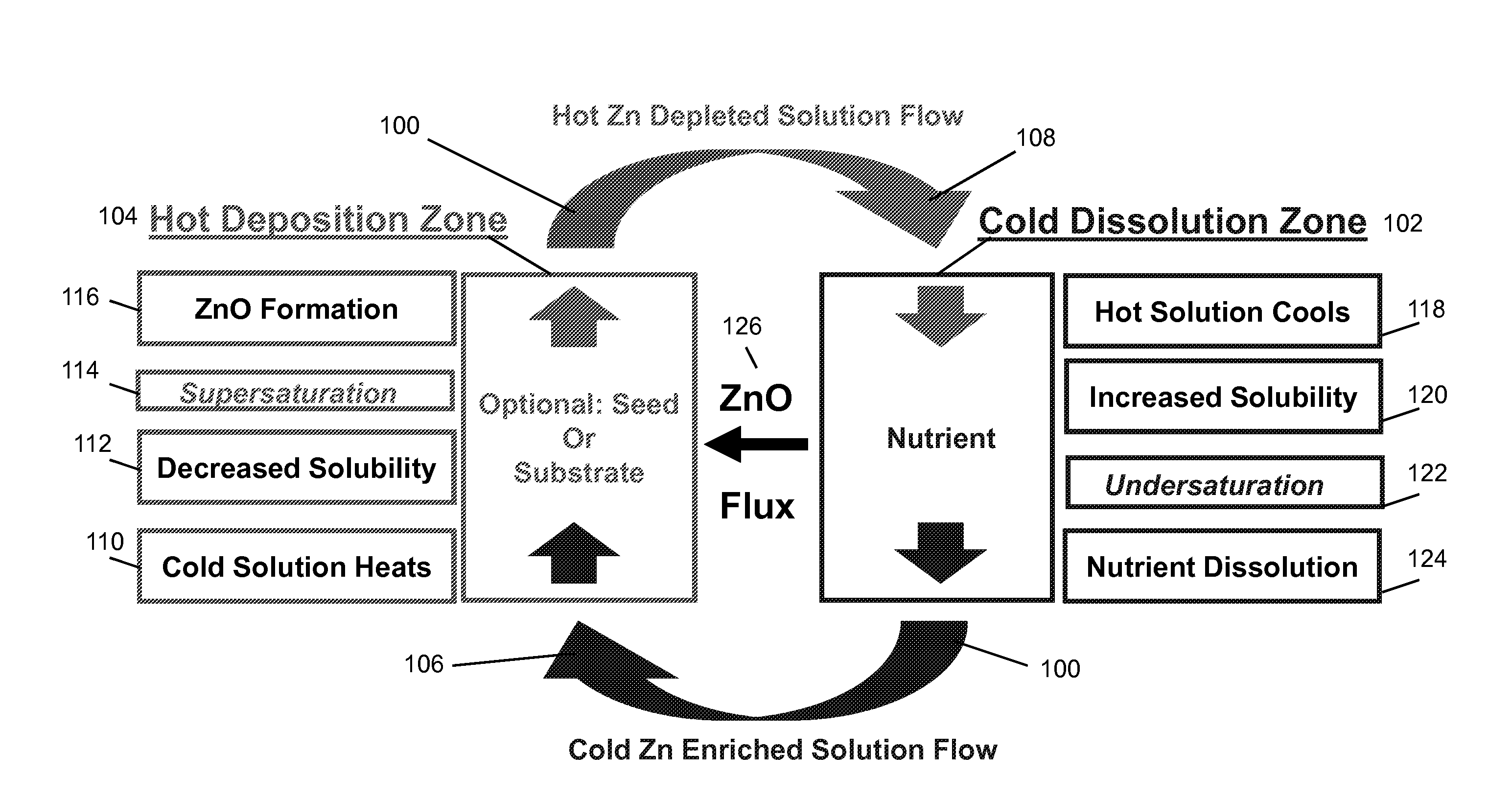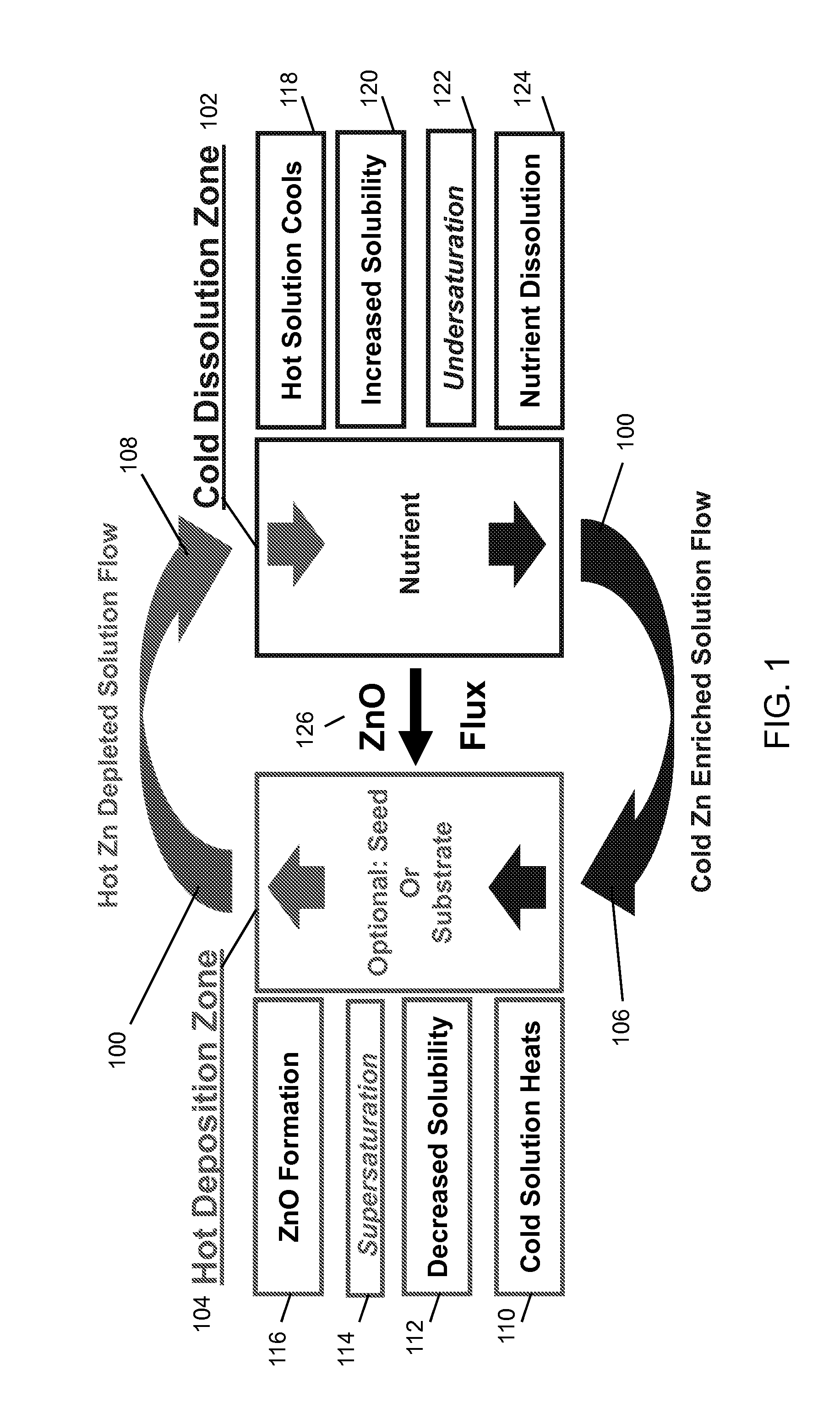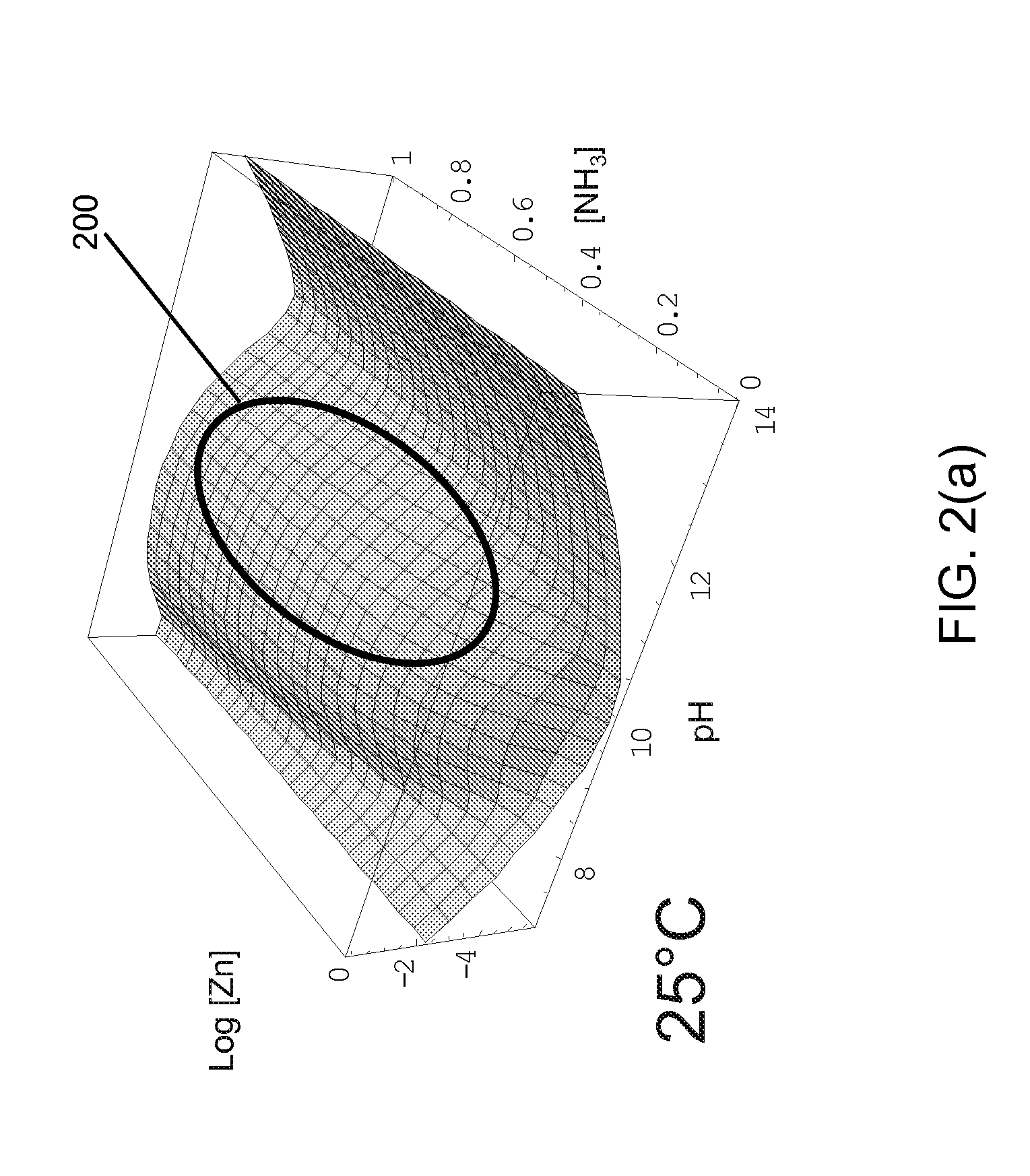LOW TEMPERATURE CONTINUOUS CIRCULATION REACTOR FOR THE AQUEOUS SYNTHESIS OF ZnO FILMS, NANOSTRUCTURES, AND BULK SINGLE CRYSTALS
a zno film, low temperature technology, applied in the direction of crystal growth process, chemistry apparatus and processes, pulling from melt, etc., can solve the problems of high production cost, high temperature of melt based methods for producing zno crystals, and high cost of production
- Summary
- Abstract
- Description
- Claims
- Application Information
AI Technical Summary
Benefits of technology
Problems solved by technology
Method used
Image
Examples
Embodiment Construction
[0050]In the following description of the preferred embodiment, reference is made to the accompanying drawings which form a part hereof, and in which is shown by way of illustration a specific embodiment in which the invention may be practiced. It is to be understood that other embodiments may be utilized and structural changes may be made without departing from the scope of the present invention.
[0051]Overview
[0052]A novel process is presented for the synthesis of ZnO from low temperature aqueous solution using a continuous circulation method and reactor. By utilizing the temperature dependence of ZnO solubility in ammoniacal aqueous solution, between the freezing and boiling range of the solution, to drive a dissolution and recrystallization process, the method may be used to transform a Zn source, such as ZnO powder, into ZnO of another desired form, which could be a film, nanostructures, or a bulk single crystal. The reactor for performing this method is comprised of at least tw...
PUM
| Property | Measurement | Unit |
|---|---|---|
| melting point | aaaaa | aaaaa |
| temperatures | aaaaa | aaaaa |
| pressures | aaaaa | aaaaa |
Abstract
Description
Claims
Application Information
 Login to View More
Login to View More - R&D
- Intellectual Property
- Life Sciences
- Materials
- Tech Scout
- Unparalleled Data Quality
- Higher Quality Content
- 60% Fewer Hallucinations
Browse by: Latest US Patents, China's latest patents, Technical Efficacy Thesaurus, Application Domain, Technology Topic, Popular Technical Reports.
© 2025 PatSnap. All rights reserved.Legal|Privacy policy|Modern Slavery Act Transparency Statement|Sitemap|About US| Contact US: help@patsnap.com



